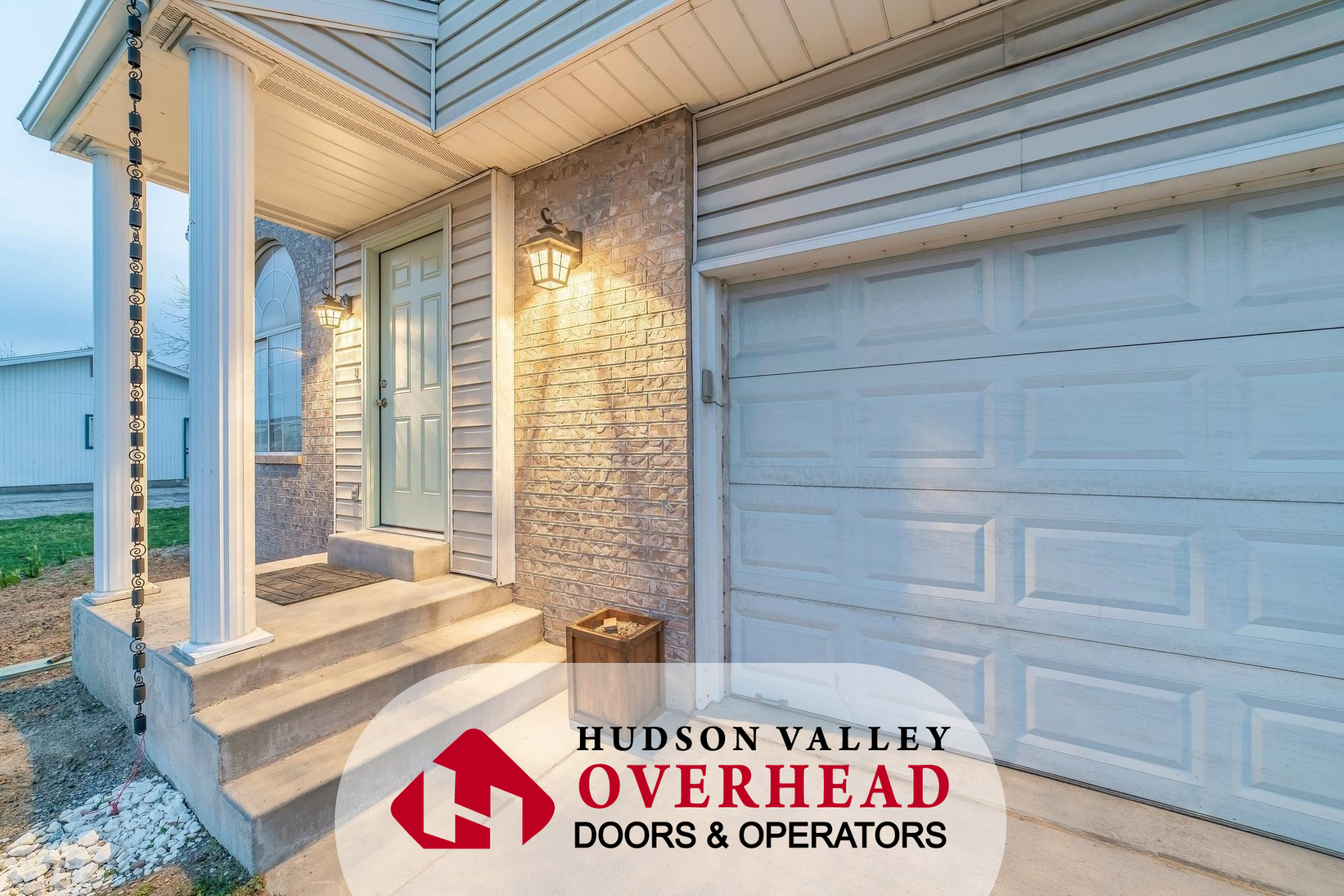In commercial construction, the garage door is more than a functional barrier, it’s an integral component of a building’s security, energy efficiency, and architectural identity. It contributes not only to the physical protection of the structure but also to operational efficiency, tenant satisfaction, and overall curb appeal. A well-chosen commercial garage door can help lower heating and cooling costs, streamline logistics, and reinforce a brand’s visual identity, all while maintaining code compliance and safety standards.
As technology and building codes continue to advance, property developers, facility managers, and contractors are increasingly discerning about material selection. Today’s commercial garage door must do more than open and close reliably, it must also withstand the region’s climate fluctuations, meet fire and wind resistance criteria, and support modern automation systems that enhance workplace safety and efficiency.
Among the most widely used options today are steel, wood, and aluminum. Each offers distinctive benefits in durability, design, and compliance with garage door safety standards. Steel is favored for its high strength, resistance to impact, and minimal maintenance requirements, making it ideal for high-traffic service bays and industrial complexes. Wood, while less common in purely utilitarian settings, offers unmatched aesthetic appeal and is often selected for client-facing commercial spaces that require a touch of traditional or custom design. Aluminum stands out for its corrosion resistance, lightweight nature, and suitability for larger spans or glass panel integration, frequently seen in car dealerships and showrooms.
The experts at Hudson Valley Overhead Doors & Operators emphasize that understanding the strengths and limitations of each material is essential for achieving the right balance of safety, cost-efficiency, and long-term value, particularly in regions like Dutchess County and the broader Hudson Valley, where property performance and compliance expectations are high. In these areas, selecting the right commercial garage door material is not just a design decision, it’s a strategic investment in the longevity and resilience of the property.
Material Selection: A Strategic Design Decision
Selecting between steel, wood, and aluminum is not purely aesthetic. For commercial developers in the Hudson Valley, the decision impacts everything from insurance eligibility and code compliance to sustainability targets and maintenance schedules.
Facility owners seeking modern roll-up gates for commercial properties or large-scale sectional doors must consider how each material aligns with building function, usage volume, and environmental exposure.
Material choice also affects long-term adherence to Dutchess County property security solutions, where factors like wind-load resistance, insulation value, and corrosion protection are closely linked to safety compliance and operational reliability.
Steel Garage Doors: Strength and Compliance
Structural Performance and Reliability
Steel has long been regarded as the industry standard for commercial and industrial facilities. Its high tensile strength, durability under impact, and ability to meet stringent building codes make it a preferred choice for high-traffic operations such as distribution centers and manufacturing facilities.
Steel garage doors can be fabricated in single, double, or triple-layer configurations, often incorporating polyurethane or polystyrene insulation for thermal efficiency. Galvanized and powder-coated finishes prevent corrosion, extending the door’s service life even in demanding environments.
In accordance with the International Code Council (ICC) and New York State Building Code, steel models are frequently specified for structures requiring high wind-load resistance and fire-rated construction. These attributes support safety compliance while reinforcing physical security.

Maintenance and Operational Safety
While durable, steel requires regular upkeep to prevent surface oxidation and ensure mechanical integrity. Routine commercial garage door maintenance, including lubrication, track inspection, and spring testing, helps preserve operational safety and extend system longevity.
Hudson Valley Overhead Doors & Operators note that adherence to inspection schedules also ensures ongoing compliance with workplace safety regulations such as those enforced by the Consumer Product Safety Commission (CPSC) (CPSC.gov).
Design Flexibility
Modern fabrication techniques allow steel doors to transcend their industrial origins. Textured embossing, color coatings, and even faux-wood finishes provide architectural versatility suitable for commercial retail and mixed-use projects. These options allow property owners to integrate security and visual appeal without compromising structural integrity.
Wood Garage Doors: Heritage and Craftsmanship
Aesthetic and Architectural Integration
Wooden garage doors offer a visual warmth and authenticity that metal cannot replicate. In commercial settings such as boutique retail spaces, hospitality venues, or adaptive reuse projects, wood enhances architectural character while maintaining functionality.
Historic districts in the Hudson Valley, including communities like Spencertown, often favor natural materials to align with traditional façades. For properties in these areas, specifying Spencertown garage doors constructed from responsibly sourced wood provides both compliance with local design standards and long-term aesthetic value.
Insulation and Environmental Comfort
Wood’s natural insulation properties reduce thermal transfer, providing improved interior climate control compared to uninsulated metal doors. This contributes directly to energy efficiency objectives, particularly in temperature-sensitive commercial environments such as studios, storage facilities, or hospitality properties.
Wood also absorbs operational noise more effectively than metal, creating quieter entry systems suitable for mixed-use or pedestrian-heavy zones.
Maintenance Demands and Lifecycle
The primary consideration for wood is maintenance. To preserve structural integrity, surfaces must be sealed and refinished periodically to prevent warping, cracking, or moisture infiltration. Neglecting these tasks can reduce performance and lead to premature material degradation.
When maintained properly, however, high-quality wood doors can last decades while offering a timeless architectural statement.
Compliance and Safety
Wood doors can be reinforced with steel frames or internal bracing to meet warehouse garage door safety standards. Many models now incorporate motorized systems and modern safety features, such as automatic reverse mechanisms and infrared obstruction sensors, ensuring compliance with NFPA and CPSC guidelines.
The National Fire Protection Association (NFPA) requires all fire-rated door systems, regardless of material, to undergo annual testing under NFPA 80 to verify closure reliability and resistance performance.
Aluminum Garage Doors: Modernization and Efficiency
Lightweight Functionality
Aluminum garage doors have gained popularity for their combination of corrosion resistance, lightweight construction, and contemporary design. These attributes make them especially well-suited for commercial facilities seeking a balance between visual appeal and operational performance. For properties in high-humidity or variable weather environments, such as those throughout Dutchess County, aluminum provides a low-maintenance alternative to heavier materials that may be more susceptible to rust or warping.
Because of its reduced weight, aluminum places less stress on openers and counterbalance systems, improving energy efficiency and extending mechanical component life, a valuable advantage for high-cycle applications. Facilities such as loading docks, service centers, and fleet garages that rely on frequent open-close cycles can benefit significantly from the reduced wear and tear associated with aluminum systems. The lighter weight also simplifies installation and retrofitting, reducing labor time and associated costs, a key factor for property managers balancing project timelines with long-term durability.
Energy Efficiency and Natural Light Integration
Insulated aluminum models feature thermal breaks and polyurethane cores that enhance building envelope performance. These thermal elements contribute to better indoor temperature regulation, helping commercial buildings reduce HVAC demand and achieve greater energy savings throughout the year. In colder climates or seasons, the insulation helps retain interior heat, while in warmer months it acts as a barrier against external heat gain.
Many commercial architects are now specifying aluminum-framed doors with integrated glass panels, which admit daylight and reduce artificial lighting costs. These full-view or partially glazed designs have become a signature feature in retail, hospitality, and automotive environments, where transparency and brand visibility are essential. This approach aligns with the U.S. Department of Energy’s recommendations for natural daylighting and passive energy management within commercial structures. By incorporating more daylight into interior spaces, businesses can improve occupant well-being, enhance workspace ambiance, and reduce reliance on electric lighting systems, all of which support sustainability goals and LEED certification efforts.
Durability and Maintenance
Although not as impact-resistant as steel, aluminum doors resist corrosion exceptionally well and maintain appearance with minimal upkeep. Unlike wood, aluminum does not rot, warp, or crack under fluctuating temperatures and moisture exposure, making it ideal for the unpredictable climate shifts experienced across the Hudson Valley. This corrosion resistance is especially valuable for facilities exposed to road salt, industrial chemicals, or marine air.
Occasional cleaning and hinge lubrication are typically sufficient for long-term reliability. Aluminum’s smooth surfaces also make it easy to remove dirt, debris, or graffiti, which helps commercial properties maintain a clean and professional image. Additionally, most modern aluminum garage doors are finished with baked-on enamel or anodized coatings, which enhance surface durability and reduce the need for repainting or refinishing over time.
Hudson Valley Overhead Doors & Operators note that regular visual inspections and alignment checks are critical to sustaining safe operation under the region’s variable seasonal conditions. These routine checks can help identify early signs of mechanical wear, misalignment, or moisture infiltration before they become safety hazards or require costly repairs. In areas like Dutchess County, where winter freeze-thaw cycles and summer humidity can strain building materials, proactive maintenance is especially crucial for maximizing the service life of aluminum garage doors.
Performance and Compliance Across Materials
Regardless of whether a door is made from steel, wood, or aluminum, performance ultimately depends on compliance with structural and safety standards.
The International Code Council (ICC), NFPA, and CPSC each provide specific guidance governing fire separation, load resistance, and automatic safety mechanisms. Property owners must ensure that door assemblies meet the applicable standards for occupancy type and operational environment.
Structural and Fire Code Compliance
Commercial roll-up and sectional doors in New York must comply with ICC building standards, including those governing wind resistance and fire performance. Fire-rated doors, particularly those in mixed-use or storage facilities — must be tested annually and documented to verify compliance.
Operational Safety Standards
Under CPSC guidelines, automated door systems are required to include entrapment protection, safety reverse functionality, and photo-eye sensors. Proper calibration and commercial garage door maintenance are vital to ensuring these systems function as intended, especially in high-volume industrial environments.
Maintenance as Compliance Assurance
Maintenance is not merely a best practice, it is a compliance mandate. The experts at Hudson Valley Overhead Doors & Operators emphasize that preventive maintenance programs, including periodic door realignment and safety reverse system testing, are essential to meeting both manufacturer warranties and regulatory obligations.
Environmental Responsibility and Sustainability
As commercial construction increasingly prioritizes eco-conscious design, material choice for garage doors plays a critical role in meeting sustainability targets. Whether the goal is reducing a building’s carbon footprint, qualifying for LEED credits, or aligning with corporate ESG policies, selecting the right garage door material can make a measurable impact on long-term environmental performance.
Steel: Industrial Strength and Recyclability
Steel’s high recyclability makes it a sustainable choice for modern developments. With much of the global steel supply being continually reused and reprocessed, many commercial steel doors are now produced from over 60% recycled material, reducing embodied carbon and supporting circular manufacturing initiatives. This makes steel an attractive option for developers pursuing green building certifications or looking to integrate low-carbon strategies into industrial and logistics projects.
Beyond its recyclability, steel’s durability contributes to environmental responsibility by reducing the need for frequent replacements. Long service life, combined with the ability to refurbish or re-coat existing steel doors, helps lower overall material consumption across a building’s lifecycle. When paired with insulated cores and weather-sealed construction, steel garage doors also support energy retention and operational efficiency in high-traffic commercial settings, further aligning with sustainable building performance standards.
Wood: Renewable but Maintenance-Dependent
Wood offers renewable sourcing potential but requires regular maintenance to preserve environmental performance. It remains a preferred option for commercial applications where natural aesthetics or historical restoration are key design drivers, such as in boutique retail storefronts, hospitality venues, or adaptive reuse projects in Dutchess County.
However, wood’s sustainability depends heavily on responsible sourcing and finishing. Using FSC-certified timber and low-VOC finishes allows builders to align natural design preferences with sustainability objectives while minimizing harmful environmental impacts. These certifications ensure that the wood comes from forests managed with respect for biodiversity, worker rights, and long-term ecosystem balance. That said, maintaining the environmental integrity of wood garage doors requires consistent upkeep: sealing, staining, and protecting against moisture intrusion are all necessary steps to prevent rot, pest damage, and premature material failure.
For clients committed to both visual impact and eco-conscious values, wood remains viable, but it demands a long-term maintenance strategy and a higher commitment to ongoing resource stewardship.
Aluminum: Lightweight and Energy-Conscious
Aluminum’s recyclability and long lifespan make it one of the most eco-efficient materials for commercial door construction. Its resistance to rust, low maintenance needs, and ability to integrate with daylight-enhancing glass panels support both environmental durability and operational energy savings.
Though its production is energy-intensive, its extended service life and minimal maintenance requirements help offset lifecycle emissions. Unlike materials that degrade quickly or require regular chemical treatments, aluminum retains its structural integrity and appearance over decades, reducing the need for replacement and contributing to reduced landfill waste. Its lightweight nature also reduces transportation energy during shipping and eases installation, cutting down labor and machinery emissions on job sites.
Additionally, when used in insulated aluminum models, the inclusion of thermal breaks and polyurethane cores boosts building envelope performance, reducing heating and cooling loads and lowering overall operational carbon. Combined with its strong compatibility with solar-reflective finishes and daylighting features, aluminum supports a multi-faceted approach to sustainability that balances environmental impact, design flexibility, and functional performance.

Practical Applications by Property Type
The ideal material varies based on operational requirements, environmental exposure, and design intent.
- Steel is ideal for warehouses, industrial sites, and facilities prioritizing strength and warehouse garage door safety.
- Wood suits commercial storefronts, hospitality venues, and historical properties requiring architectural authenticity.
- Aluminum is favored in retail, automotive, and mixed-use developments emphasizing natural light and contemporary aesthetics.
Developers across the Hudson Valley often select hybrid systems, such as insulated steel cores with aluminum exteriors, to achieve optimal performance across multiple criteria.
Expert Commentary on Long-Term Performance
According to Hudson Valley Overhead Doors & Operators, the most effective approach to garage door specification begins with a holistic assessment of building function, safety obligations, and environmental factors. This means looking beyond aesthetic preferences and upfront costs to evaluate how the garage door system will perform over years, or even decades, of daily use, exposure to the elements, and evolving building codes.
Each commercial property presents unique operational demands. For example, a warehouse requiring constant door operation demands a steel or aluminum model engineered for high-cycle performance. In these environments, durability, mechanical reliability, and resistance to impact or wear are non-negotiable. Reinforced tracks, heavy-duty torsion springs, and insulated panels help ensure smooth operation even under demanding logistics schedules.
Conversely, a retail development prioritizing visual appeal might select a wood or glass-integrated aluminum system that complements the architectural façade. These designs serve as both entry points and visual extensions of the brand, and they must strike a delicate balance between style, visibility, and performance. In such applications, materials like FSC-certified wood or anodized aluminum with daylight-admitting panels allow developers to meet both sustainability goals and customer-facing design standards.
Regardless of material, every installation must adhere to documented garage door safety standards and undergo ongoing compliance verification. These standards, often set by ANSI, DASMA, and local building codes — encompass everything from automatic reversal mechanisms to wind-load resistance and fire separation requirements. Hudson Valley Overhead Doors & Operators stress the importance of ensuring that every system is installed, tested, and documented in line with these codes to prevent liability and extend operational reliability.
Annual inspections, fire door testing, and maintenance logs provide not only operational assurance but also evidence of regulatory diligence. These records can become essential during insurance audits, occupancy permit renewals, or property transfers. In Dutchess County and the greater Hudson Valley, where seasonal weather extremes, aging infrastructure, and updated municipal regulations intersect, proactive documentation is critical for legal and financial protection.
Ultimately, long-term performance depends not only on selecting the right garage door material but also on working with a trusted commercial partner who understands the intersection of safety, sustainability, and compliance. Hudson Valley Overhead Doors & Operators brings decades of regional expertise to every project, ensuring that each installation supports the broader goals of property value, occupant safety, and operational continuity.
The Future of Commercial Door Materials
Looking ahead, the commercial construction landscape is poised for transformative change, and the garage door industry is no exception. As buildings become smarter, more energy-conscious, and more adaptable to evolving operational demands, the next decade is likely to bring a new generation of materials that blend the properties of steel, wood, and aluminum. These hybrid innovations are not just theoretical; they are already influencing product development across manufacturing sectors focused on performance, aesthetics, and sustainability.
Composite structures incorporating insulated cores, corrosion-resistant skins, and smart technology interfaces are already emerging in the marketplace. These next-generation doors combine the strength and recyclability of steel, the warmth and visual appeal of wood, and the lightweight versatility of aluminum, often within a single unit. The result is a product that offers exceptional thermal performance, impact resistance, and visual customization, all while supporting modern compliance standards and green building certifications.
Artificial intelligence and building automation will further enhance door functionality, enabling predictive maintenance and real-time performance monitoring. Already, leading-edge systems are integrating with Building Management Systems (BMS) to provide centralized control and feedback loops. Facility managers may soon oversee door systems capable of self-diagnosis, adaptive insulation, and automated energy management, features that can drastically reduce downtime, repair costs, and energy consumption.
These smart systems may also include motion sensors, environmental data integration, and dynamic load balancing to adjust operation based on temperature, humidity, or usage frequency. This aligns with broader trends in commercial real estate: intelligent infrastructure, energy modeling, and integrated asset performance tracking.
In Dutchess County and the greater Hudson Valley, these innovations will redefine expectations for safety, sustainability, and property efficiency, ensuring that garage door systems continue to evolve as vital components of modern commercial infrastructure. As local developers and property managers face rising demands for ESG transparency, energy performance, and cost-effective building solutions, future-ready garage doors will become a strategic asset, not just a functional necessity.
Hudson Valley Overhead Doors & Operators remains at the forefront of this evolution, continually researching and integrating the latest technologies to help clients future-proof their commercial properties. Whether retrofitting an existing facility or designing a new construction project, staying ahead of these trends will ensure long-term value, regulatory compliance, and operational excellence in an increasingly dynamic market.





